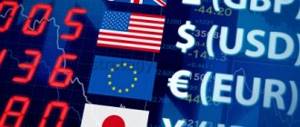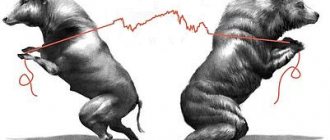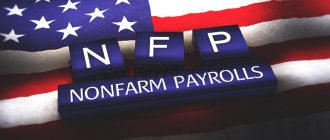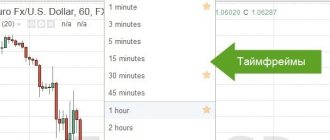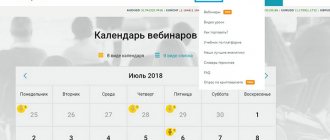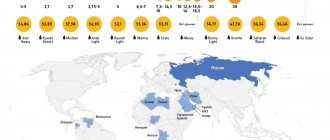Hello, dear friends! Forex brokers offer traders dozens of currency pairs - majors, crosses, and exotic assets. Technically you can trade any tool available in the trading terminal, but the comfort of work will differ depending on the selected asset. For example, major currency pairs are much easier to analyze compared to exotics such as the South African rand, Norwegian krone and other unpopular instruments.
Each pair has a “ character ”, features of movement that directly affect the ease of forecasting and trading results. To make an informed choice, you need to know about the strengths and weaknesses of currency pairs. This is what we will focus on today.
What is a currency pair
A currency pair is a financial instrument for trading on Forex. When you buy one currency from a pair, you automatically purchase another.
What are they needed for
Main functions:
- States, by tying their national currency to US dollars, want to achieve their economic goals. Therefore, by buying dollars, the government strengthens the national currency and its economy.
- Organizations engaged in international business buy the currencies of their consumer countries. Thereby insuring your risks. This is called hedging.
- To benefit from changes in rates or rates, that is, speculation. Trading on Forex is open to anyone on the Internet. Previously, only banks and financial companies had access to it.
What are they characterized by?
Liquidity is an important indicator of a currency, which means the reliability of a country and its economy. It depends on how stable the demand for currency is and affects the possibility of its sale. To regulate this indicator, there are market makers - companies involved in the purchase and sale of large volumes of foreign currency.
Major Currency Pairs
The main currency pairs include pairs that include the US dollar and the currencies of the most significant countries (groups of countries). Here they are:
EUR/USD – Euro/US Dollar GBP/USD – British Pound/US Dollar AUD/USD – Australian Dollar/US Dollar NZD/USD – New Zealand Dollar/US Dollar USD/JPY – US Dollar/Japanese Yen USD/CHF – US Dollar /Swiss Franc USD/CAD – US Dollar/Canadian Dollar
Of the above, it is quite possible to use all pairs in trading except USDCAD. USDCAD is not very predictable using technical analysis and is only suitable for overnight scalping. For example, the same Forex Shocker. I also advise beginners not to trade USDCHF and USDJPY. USDCHF is characterized by weak stability of movements, and USDJPY requires a slightly more careful analysis than other “majors” and often throws out unexpected tricks, such as central bank intervention.
Gold vs Silver
The gold market is more liquid and has big movements, because so many people trade gold. There are a lot of swings and a lot of trend movements on the chart; in addition, pronounced price action patterns are formed.
In the daily gold chart below, notice the good trend and clear signals that have formed within this trend. Compare this to Silver's chart below and you'll see a significant difference.
This graph is dirtier than the previous one. Price movements are jerky, making it much more difficult to trade.
Conclusion:
Price action methods are applicable to many different markets around the world, not just Forex. However, just because you now have access to hundreds of markets does not mean that you need to trade them all. By becoming a specialist in a specific market (currency pair), you will significantly increase your chances of success in long-term trading.
What are liquid currency pairs
Liquidity is a term that characterizes the possibility of sale, that is, the greater and more stable the demand for currency, the higher the liquidity.
Knowledge of the factors influencing this characteristic of money allows us to understand the logic of the behavior of market participants. Market makers are responsible for maintaining liquidity at a certain level - these are large players, banks, brokerage companies, and dealer firms. Regulation is carried out by buying or selling significant amounts of currency. For small traders, these organizations act as intermediaries. This indicator is an index of the reliability of the state, the volume and quality of its economy.
Pairs made up of liquid currencies have several positive properties for a trader
:
- minimum spread;
- order execution in a short time;
- low probability of slippage.
How to read a currency pair
Let's figure out how to correctly understand the essence of a currency pair.
For example, if we have the euro/dollar pair, also known as EUR/USD, and its value is 1.2880, we read it like this:
EUR/USD = 1.2880, therefore 1 euro = 1.2880 US dollars.
See, it's very simple. Or, let's say, read USD/JPY:
USD/JPY = 97.64, therefore 1 US dollar = 97.64 yen
This will make it even clearer for you:
What happens when the quote of a currency pair changes
It's easy for a beginner to get confused here. Because there are two currencies in a pair, and what happens when one currency strengthens or weakens in relation to the other? Imagine that these currencies are on such scales. We see scenarios A and B.
- Scenario A: If the base currency (EUR) strengthens against the USD, it becomes “heavier”, the scales tip and the quote goes up. Was 1.2880, became 1.2885. This means that for 1 “heavier” euro we can buy more “lighter” dollars.
- Scenario B: It's the other way around. If the dollar strengthens against the euro, the scales tip in the other direction, the price goes down, because the dollar “outweighs” and 1 dollar can buy more euros.
Types of currency pairs
All currency pairs in the world can be divided into the following 3 categories:
- main pairs (“major”);
- cross pairs;
- exotic couples.
As we can see in the picture below, the major currencies rule the show.
Major currencies
These are the currencies of the richest economies on the planet: the USA, Great Britain, Japan, Switzerland and Canada.
These are the “majors” in trading slang:
- EUR/USD
- USD/JPY
- GBP/USD
- AUD/USD
- USD/CHF
- NZD/USD
- USD/CAD
The main pairs are the most liquid, in other words, they are widely traded, often and willingly. Accordingly, they are also the most popular. But that's not necessarily a good thing. Let's say the euro/dollar is the most popular currency pair in the world, but I would not say that it is the simplest.
Too much news influences her and not all of them can be found on the Internet, so be careful with her. As you can see, everyone has the dollar as their base or quoted currency.
Cross pairs
Currency crosses are pairs without the dollar. Why crosses - because most currencies are pegged to the US dollar.
So first they change to dollars and then to each other. To exchange euros for pounds (EUR for GBP), you first need to exchange euros for dollars, and only then for pounds. Trading platforms do this automatically, but you need to know the gist. As a result, there are quite a lot of such crosses, for example:
- GBP/JPY
- EUR/GBP
- CAD/JPY
- AUD/CAD
- EUR/AUD
- NZD/JPY
- EUR/NZD
Exotic couples
You are unlikely to trade these tugriks, because they contain the currencies of small European countries that have not introduced the euro (say, the Norwegian krone) plus the currencies of developing countries in Asia, Africa, the Middle East and other South Americas.
They are rarely traded, their trading volumes are small, and their liquidity is low. Very risky to work with. Couples for real perverts:
- EUR/TRY
- USD/SEK
- USD/NOK
- USD/DKK
- USD/ZAR
- USD/HKD
- USD/SGD
Types of currency pairs
Nowadays, almost all known currencies, which are collected in pairs, are used for Forex trading. Historically, currency pairs have been divided into 3 subgroups - according to popularity, liquidity, trading volume and activity, and other values.
Majors
This is the smallest but most significant group. Major pairs or simply majors have the highest and most significant indicators in terms of liquidity, frequency of use, total trading volumes and turnover on the global currency arena.
These are the most popular tools that everyone works with - from beginners to seasoned traders. In addition, these pairs have minimal spreads.
The group of majors includes the currencies of the world's leading economies. These include the European Union, USA, Canada, Great Britain, Switzerland, Japan, Australia and New Zealand.
Full list of major pairs:
- AUD/USD (Australian dollar vs US dollar),
- EUR/USD (euro vs US dollar),
- USD/JPY (dollar vs Japanese yen),
- GBP/USD (British pound vs US dollar),
- USD/CHF (US dollar vs Swiss franc),
- USD/CAD (US dollar vs Canadian dollar),
- NZD/USD (New Zealand dollar vs US dollar).
All majors contain the US dollar, since the US dollar is the largest currency in the Forex market. In some cases, brokers add several more pairs to the majors, such as EUR/CHF, EUR/GBP, GBP/JPY, which is not entirely true.
Crosses
This group includes all possible combinations of the major currencies listed above, but does not include the US dollar. This group is called secondary (minor) currency pairs. In the trading environment they are called cross rates, cross pairs or simply crosses.
These pairs also have high liquidity, but are in less demand due to their higher spread than the majors.
The main crosses include:
- AUD/CAD (Australian dollar/Canadian dollar),
- AUD/CHF (Australian dollar vs Swiss franc),
- AUD/JPY (Australian dollar vs Japanese yen),
- AUD/NZD (Australian dollar vs New Zealand dollar),
- CAD/JPY (Canadian dollar vs Japanese yen),
- CHF/JPY (Swiss franc vs Japanese yen),
- EUR/AUD (euro vs Australian dollar),
- EUR/CAD (euro vs Canadian dollar),
- EUR/CHF (euro vs Swiss franc),
- EUR/GBP (euro vs British pound),
- EUR/JPY (euro vs Japanese yen),
- EUR/NZD (euro vs New Zealand dollar),
- GBP/AUD (British pound vs Australian dollar),
- GBP/CHF (British pound vs Swiss franc),
- GBP/JPY (British pound vs Japanese yen),
- NZD/JPY (New Zealand dollar vs Japanese yen).
Exotic currency pairs
The third group is called exotics or Exotics (exotic currency pairs). It contains all the currencies that were not included in the previous groups. These are currencies of countries with weak and developing economies, currencies of small countries, etc.
The base currency in such pairs, as a rule, is the currency of the major group. There are practically no completely exotic options where both currencies are not majors.
There are a huge number of these pairs; it would be inappropriate to list them all, here are just a few as examples:
- USD/RUB (US dollar vs Russian ruble),
- USD/MXN (US dollar vs Mexican peso),
- EUR/DDK (Euro vs Danish Krone).
The liquidity of exotics is much lower, while the spread is higher and can be floating (if there is strong interest, the spread can widen, and each broker has its own way). For example, when oil prices began to fall, the ruble began to trade with an artificially widened spread - the broker deliberately widened the spread, since it was not profitable for him to have a large number of traders trading in one direction. However, not all brokers on the market do this.
Not exactly currency pairs
There are pairs that include metals. Some brokers group them into separate groups and even label them as a pair, although gold, silver, copper, etc. are not currencies.
- XAU/USD (gold vs US dollar),
- XAG/USD (silver vs US dollar),
- XAUEUR (gold vs euro),
- XAGEUR (silver vs euro).
Trading silver is not related to trading in the foreign exchange market. This is already trading in metals. By the same principle, trading in hydrocarbons, raw materials, indices, futures, CFDs and cryptocurrency should not be classified as trading in currency pairs. In the classical sense, a currency pair is the currency of one state against the currency of another state in one pair.
DAX - German stock index
DAX (German stock index) is a stock market index consisting of 30 largest German companies, traded on the Frankfurt Stock Exchange.
DAX is offered as a futures CFD on Metatrader (DAX30.fs and CFD-GER30).
The DAX is similar to the S&P500 in that it is also very volatile, but the price can consolidate by 10-15% over several days or a longer period. So trading is not for the faint of heart, but only for experienced traders who understand how to correctly read a chart, enter and exit a trade.
Criteria for selecting a currency pair
A combination of certain criteria or characteristics of currency pairs can help you choose a currency pair for trading. A distinctive feature of the foreign exchange market is very high liquidity, so this parameter can be ignored; there is always supply and demand for currencies. I have identified three important criteria that you should pay attention to when selecting a currency pair:
Time of the most active trading
Each currency pair has its own specific time of maximum activity. This is the time when the highest trading volumes take place in a currency pair and strong price movements are possible. For example, the currency pairs USD/JPY, AUD/USD and NZD/USD are very actively traded early in the morning during the Asian trading session.
At this time, major news comes out that can have a strong impact on the rates of these currencies. If you trade only during a certain period of time within a day, it is better to choose currency pairs with maximum activity at this time.
Volatility
Volatility is the range of fluctuations of a particular currency pair over a certain time, usually assessed over a daily period. Accordingly, some currency pairs trade in a relatively narrow range, while others, on the contrary, have a large range of movement per day.
The greater the volatility of the pair, the greater the possible profit, but the Stops must be set quite large. Here everyone chooses what suits him best - high volatility and large Stops, or low volatility with small Stops. To assess and compare the volatility of currency pairs, you can use a special indicator – ATR (Average True Range).
Transaction costs
Another important criterion when choosing a currency pair is the cost of the transaction. On standard Forex accounts, the cost is the spread - the difference between the buying and selling rates. On advanced ECN accounts, the spread is minimal, but there is also a small commission for trading turnover. As a rule, major currency pairs have the smallest spread, cross rates have a slightly larger spread, and exotic currency pairs have a higher spread.
Paired currencies
All currencies on Forex are traded exclusively in pairs. The format for displaying currencies, as already mentioned, is always the same. This procedure is approved and regulated by ISO (an international organization whose full name sounds like International Organization of Standardization).
There are always two people involved in trading on the foreign exchange market: the buyer wants to buy as cheaply as possible, the seller wants to sell as expensive as possible. Therefore, for any currency pair, the Bid (sales) and Ask (purchases) prices are indicated. The difference between them is also usually written down and is called a spread.
What a deal looks like for any currency pair:
- One side buys currency 1 for 2 (or sells 2 for 1)
- The second party sells currency 1 for 2 (or buys 2 for 1)
This happens simultaneously and at set prices. Almost any currency in the world can be paired, but traders do not work with all of them.
There are very popular assets, and there are those that almost no one trades, since they do not provide income (the price, for example, has not changed for years and there is no point in making purchase/sale transactions).
Trading currency pairs
Buying and selling currency pairs is one of the ways modern traders make money. Its essence comes down to simple speculation on the difference in exchange rates. The purchase is made with the goal of then selling at a higher price, and the sale, accordingly, with the goal of then buying back at a cheaper price (pocketing the difference between the purchase and sale prices).
How to trade
Decisions to buy or sell are made based on:
- Fundamental analysis;
- Technical analysis;
- Combined analysis.
Fundamental analysis involves a comprehensive study of macroeconomic factors that in one way or another influence the currencies that make up the traded pair. Much attention is also paid to the analysis of important economic news.
Technical analysis is based on analysis of the price chart of the currency pair being traded, and combined analysis involves a combination of both of the above types. The most optimal option is the use of a combined analysis, combining both chart analysis and analysis of important economic aspects.
Where to trade
You can trade currency pairs both on the Forex market (FOREX – Foreign Exchange) and on the stock exchange. In the first case, trading is carried out through Forex brokers, and in the second case, through the official exchange platform.
Each of these methods has both its advantages and disadvantages.
When trading through a Forex broker, you can get by with a small starting capital (many offer micro-accounts with a deposit starting from $1) and trade with minimal costs in the form of spreads. In addition, Forex brokers usually provide a fairly wide selection of financial instruments (from major pairs to exotic currency pairs). But brokers of this kind, in our country, do not yet have a sufficient degree of regulation and control (including from the state). In this case, there is a high chance of running into the so-called Forex kitchen with all the ensuing consequences (read more about this here: What is a Forex kitchen).
Trading through an organized exchange requires more initial capital and often comes with exchange fees (in addition to the spread). The choice of currency pairs here is usually limited to the most basic ones. However, all transactions carried out on the exchange market have a sufficient degree of transparency and are subject to mandatory control. When trading on the stock exchange, you will be almost completely insured against fraudulent activities on the part of the broker.
List of currency futures traded on the Moscow Exchange
Another point that distinguishes exchange trading of currency pairs from trading through a Forex broker is that it is not the pairs themselves that are traded on the exchange, but futures on them. But this does not change the essence of the matter; the price of futures changes similarly to the price of a currency pair and, therefore, they can be traded using absolutely the same strategies.
Another difference between these two trading methods is that when trading futures there is no such thing as a swap. Which, by the way, allows you to use currency futures in arbitrage strategies for making money on swaps. Read more about this here: Risk-free strategy for making money on swaps.
Where and what to trade
When choosing a broker, focus not only on trading conditions, but also on the list of assets available for trading. In addition to currency pairs CFDs on stock indices , stocks , gold , oil and other instruments are desirable.
| Criterion | AMarkets |
| Regulation | The Financial Commission |
| Minimum capital | From $100, €100, 5000 RUB for standard accounts |
| Number of assets | 100+ |
| Recommended capital | $1000 |
| Account currency | USD, EUR, RUB |
| Maximum leverage | 1 to 1000, on ECN – 1 to 200 |
| Spread in points | Floating, from 0 for ECN, fixed from 3 |
| Commission | $2.5, €2.5 or ₽175 for 1 lot one way for ECN |
| Execution speed, ms | 53,3 – 70,0 |
| Stop Out | 20-40% |
| Exiting client transactions to the interbank market | + |
| Number of positions | No limits |
| Pending orders inside the spread | + |
| Requotes | — |
| Limiting the number of transactions | Absent |
| Limit orders inside the spread | + |
| Availability quote | — |
| Own indicators | Cayman (market sentiment) and COT (provides information from the Commodity Futures Trading Commission) |
| Peculiarities | Welcome bonus up to $10,000. Cashback, there are tournaments and other incentives for traders |
As for what to trade, I would recommend not to spread your attention to all pairs, but to select no more than 4-5 instruments for yourself. Exclude exotics, limit yourself to majors and the most comfortable crosses . The standard set looks something like this: EURUSD, GBPUSD, EURCHF, USDCHF, USDJPY.
The best currency pairs for profitable trading are selected individually; there is no universal recipe. One trader will earn consistently on EURCAD, another will receive a series of stops on the same pair, but will show good results on EURUSD. The final pool of currency pairs is selected based on statistics .
| Company | AMarkets | ||
| Rates | Standard | Fixed | ECN |
| Minimum deposit | 100$/100€ or 5000₽ | 200$/200€ or 14,000₽ | |
| Recommended capital | 1000$ | 50 000$ | |
| Leverage | 1 in 1000 | 1 to 200 | |
| Spread, points | Floating, from 1.3 | Fixed, from 3 | Floating, from 0 |
| Commission | No | 2.5$, 2.5€ or 175₽ for 1 lot one way | |
| Minimum Margin | 1$ | 5$ | |
| Stop Out | 20% | 40% | |
| Exiting client transactions to the interbank market | No | Yes | |
| Ability to place pending orders inside the spread | No | Yes | |
| Requotes | Eat | Their absence is guaranteed | |
| Open an account | |||
What influences the popularity of a currency pair?
First of all, actively traded pairs are characterized by high liquidity. This is obvious, because the more people are interested in an asset, the easier it is to buy and, accordingly, sell it.
The high liquidity of the pair, in turn, allows you to conclude transactions with lower commission costs. Among traders, this is called trading conditions.
Thus, the EURUSD currency pair will in most cases have the best trading conditions :
- Minimum spread;
- Minimum commission for transferring a transaction (swap);
- No or small commission for opening a transaction;
- Fast execution of transactions.
In this context, we should also mention the clearer formation of the candlestick chart (without gaps). This significantly affects the accuracy of readings of various indicators.
In addition to trading conditions, the popularity of a pair also affects its information visibility :
- An abundance of various analytics and expert opinions;
- Forecasts and signals are published preferably for the most popular pairs;
- Regular coverage of events in news and reviews;
- In most guides, examples are given specifically for the main currency pairs;
- Etc.
It is often argued that the most traded pairs are also the most predictable. However, this fact has no confirmation and is based mainly on guesswork.
S&P500
The S&P500 is traded as a CFD on the Metatrader platform (S&P.fs or US500).
The S&P500 consists of 500 of the largest and most significant American companies, and is considered the world's leading benchmark for investors of all types. All stocks in the S&P500 index are traded on the New York Stock Exchange and NASDAQ.
The S&P500 is a good market to "buy and hold" as US stocks tend to rise. However, during times of recession or economic turmoil, prices plummet, quickly wiping out profits. So, although it is a relatively 'easy' market to trade, making a profit over the long term requires a clear understanding of market dynamics and price movements.
Most traded pairs by region
Each line on the chart depicts the activity of a certain currency pair, that is, its volatility in points during the day. The pairs were selected in such a way as to clearly demonstrate the influence of the region on the “tradability” of the pair.
What's interesting about the graph?
- The most active hours on the market are 7:00-16:00 UTC. During this period of time, you can count on achieving your goals. While in the period from 3:00 to 7:00 the movement of currency pairs is minimal.
- Peak activity of currency pairs is observed at the intersection of the London and New York trading sessions. The most “traded time” is 15:00 UTC.
- If countries have the same trading sessions (working hours), then the activity of the currency pair should be expected only within this session. In the chart you can see how USDCAD ignores the opening of London. Other pairs with a similar effect: EURGBP, AUDNZD.
Install the trading sessions indicator directly in MT4. This way, you don’t have to constantly look at your watch, much less count the session duration, to determine the most active time for the selected pair.
Gold (XAUUSD)
Gold is the most popular precious metal in the world.
Having studied the XAUUSD chart, you can notice periods of very strong trends between periods of consolidation, where the price behaves quite volatile. So it is quite difficult to trade when Gold is in consolidation. Gold is a volatile market with large, directional movements, which means both huge potential for profit and large losses for less experienced and qualified traders.
